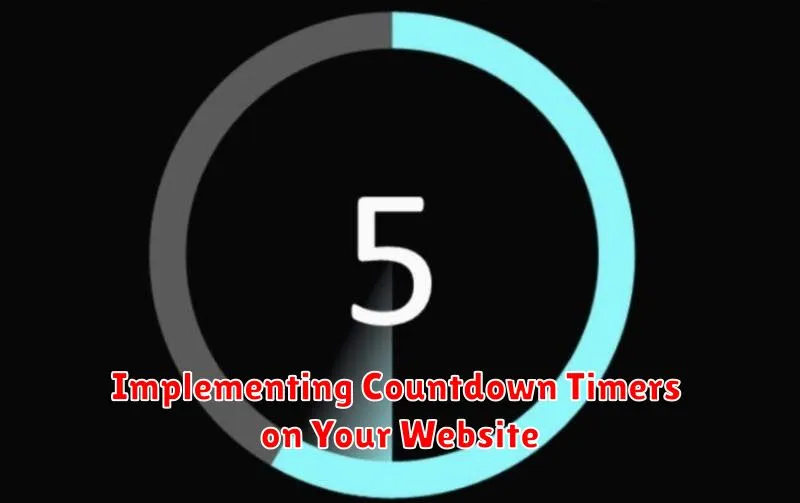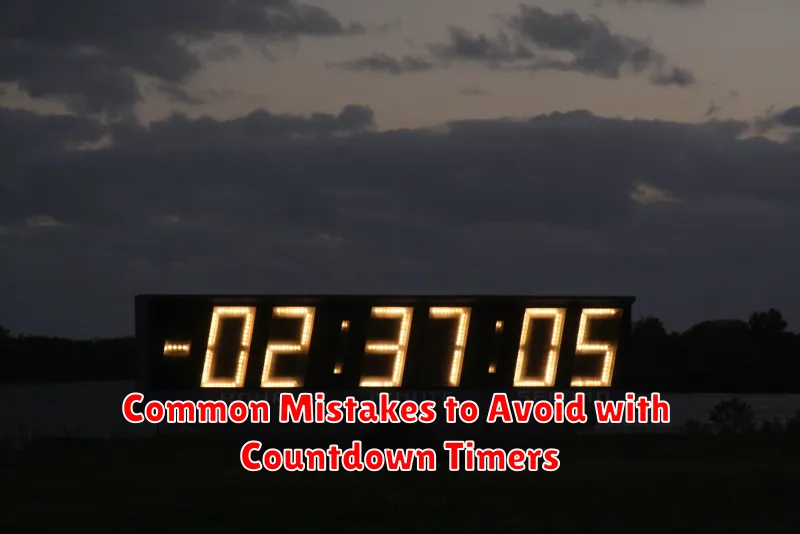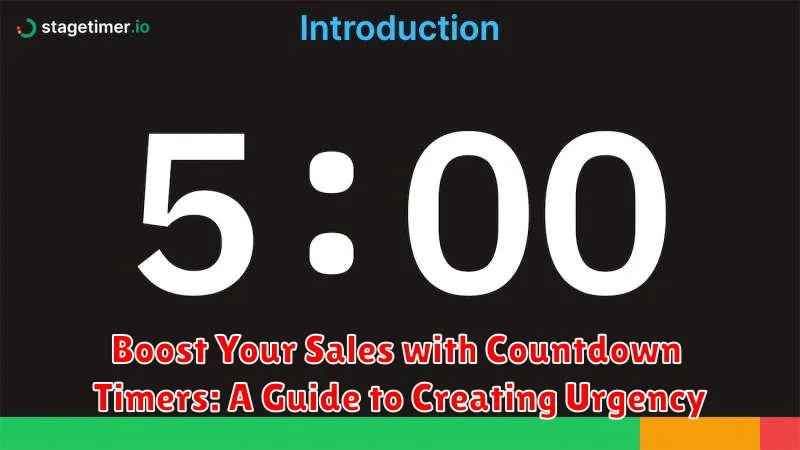In today’s competitive market, creating a sense of urgency is crucial for driving sales. Countdown timers are a powerful tool that can significantly boost your sales by encouraging immediate action from potential customers. This guide will provide you with a comprehensive understanding of how countdown timers work and how to effectively implement them into your sales strategy to maximize their impact. Learn how to leverage the psychology of scarcity and urgency to create a compelling call to action that converts browsers into buyers. Explore the different types of countdown timers and discover best practices for implementing them across various platforms, from your website to email marketing campaigns.
By strategically utilizing countdown timers, you can motivate customers to complete their purchases before the time runs out. This guide delves into the practical aspects of creating and customizing countdown timers that resonate with your target audience. Discover how to effectively position countdown timers to optimize their visibility and effectiveness, whether for limited-time offers, flash sales, or special promotions. Master the art of using countdown timers ethically and responsibly to foster trust and build long-term customer relationships, all while significantly boosting your sales and achieving your business objectives. Explore the strategic use of countdown timers and unlock their potential to transform your sales performance.
Understanding the Psychology of Urgency
Urgency is a powerful psychological principle that influences consumer behavior. It taps into the fear of missing out (FOMO) and the desire to secure a desirable offer before it disappears. This inherent human tendency can be leveraged effectively to drive sales.
Countdown timers visually represent the dwindling availability of a product, service, or special deal. This visual cue creates a sense of scarcity, further amplifying the urgency. By displaying a ticking clock, businesses can motivate potential customers to take immediate action, rather than postponing a purchase decision.
The principle of scarcity, closely related to urgency, contributes to the perceived value of an offer. When something is perceived as limited or rare, its desirability increases. Countdown timers reinforce this perception of scarcity, making the offer seem more attractive and compelling.
Types of Countdown Timers
Several types of countdown timers can be implemented to create a sense of urgency and encourage immediate action. Understanding their differences can help you choose the most effective timer for your specific campaign.
Fixed-Time Countdown Timers
These timers run for a predetermined duration and expire at a specific date and time. They are excellent for promoting limited-time offers, sales events, or product launches. The fixed deadline creates a clear sense of urgency, motivating customers to purchase before the offer expires.
Recurring Countdown Timers
Recurring timers reset after a specified period. This type is useful for daily deals, flash sales, or weekly promotions. By repeating the countdown, you create a sense of urgency at regular intervals, encouraging repeat purchases and engagement.
Evergreen Countdown Timers
Also known as personalized timers, these countdowns begin when a user arrives on a specific page. This creates a personalized sense of urgency, making the offer feel exclusive and time-sensitive, even though the timer resets for each new visitor.
Choosing the Right Timer for Your Business
Selecting the appropriate countdown timer is crucial for maximizing its effectiveness. Consider these factors when making your choice:
Timer Duration
Short-term timers (e.g., hours, minutes) create a sense of immediate urgency, suitable for flash sales and limited-time offers. Long-term timers (e.g., days, weeks) build anticipation for upcoming launches or events.
Timer Placement
Place timers strategically where they are most visible and relevant. Product pages, checkout pages, and promotional banners are effective locations. Avoid overwhelming your website with excessive timers.
Timer Design
A visually appealing timer that integrates seamlessly with your website’s design is more likely to capture attention. Ensure the timer is clear, easy to read, and mobile-responsive.
Timer Type
Static timers countdown to a fixed future date. Recurring timers reset after a specified period, useful for daily deals or weekly promotions. Evergreen timers create a sense of personalized urgency, restarting the countdown for each individual visitor.
Implementing Countdown Timers on Your Website

Adding a countdown timer to your website is generally straightforward, with several implementation methods available. Choosing the right method depends on your technical skills and website platform.
Using Plugins and Apps
For popular platforms like WordPress, Shopify, and others, numerous plugins and apps offer easy countdown timer integration. These often require minimal configuration and provide various customization options.
Custom Coding
If you’re comfortable with coding, you can create a countdown timer using JavaScript. This offers greater flexibility in design and functionality but requires technical expertise. Numerous online resources provide JavaScript code snippets for countdown timers that can be adapted to your specific needs. Be sure to choose a well-documented and reliable code source.
Third-Party Services
Some third-party services specialize in creating and managing countdown timers. These services can provide advanced features and analytics, but typically involve a subscription fee.
Placement Considerations
Strategic placement is key for countdown timer effectiveness. Consider placing timers near the call to action buttons or prominently on product pages. Ensure the timer is clearly visible and doesn’t disrupt the user experience.
Best Practices for Using Countdown Timers
Use countdown timers sparingly. Overusing timers can lead to banner blindness and reduce their effectiveness. Target specific promotions or high-value products to maximize impact.
Ensure accuracy and synchronization. Inaccurate timers erode trust. Double-check your timer settings and ensure they are synchronized across all platforms and devices.
Be honest and transparent. Clearly state the terms and conditions of the offer associated with the countdown timer. Avoid misleading tactics like constantly restarting timers or creating false scarcity.
Combine timers with other urgency tactics. Pair countdown timers with low stock indicators, limited-time offers, or special bonuses to amplify the sense of urgency.
Test and optimize. Monitor the performance of your countdown timers. A/B test different placements, durations, and designs to identify what resonates best with your audience.
A/B Testing Your Countdown Timers
A/B testing is crucial for optimizing your countdown timers’ effectiveness. By comparing different variations, you can identify which timer design, placement, and messaging resonate best with your audience and drive the highest conversion rates.
Test different timer durations. A shorter timer might create a sense of urgency, while a longer one could be more suitable for higher-priced items requiring more consideration. Experiment with timer placements. Does a timer in the header perform better than one near the call to action? Also, test different wording around the timer. Phrases like “Sale ends in:” or “Offer expires in:” can influence buyer behavior.
Use a proper A/B testing platform to split your traffic evenly between variations. Ensure a statistically significant sample size for reliable results. Carefully track key metrics such as conversion rates, bounce rates, and time spent on page. Analyze the data to determine the winning variation and implement it across your site.
Measuring the Impact of Countdown Timers on Sales
Accurately measuring the impact of countdown timers requires a data-driven approach. Key Performance Indicators (KPIs) should be tracked before, during, and after implementing the timers.
Monitor conversion rates. Compare the conversion rates of pages with countdown timers against those without. A noticeable increase suggests the timers are effective in driving purchases.
Track revenue generated during the countdown period. This helps quantify the direct financial impact of using the timers. Compare this revenue to periods without timers to identify any uplift.
Analyze average order value (AOV). Observe if the presence of countdown timers influences the amount customers spend per transaction. It is possible timers encourage larger purchases due to the perceived urgency.
Pay attention to bounce rate and time spent on page. A lower bounce rate and increased time spent on page with timers could indicate heightened engagement and interest.
Common Mistakes to Avoid with Countdown Timers

While countdown timers can be highly effective, using them incorrectly can hinder rather than help your sales. Avoid these common pitfalls:
1. Fake Urgency
Never use a timer that resets every time a user visits the page. This creates distrust and damages credibility. Customers will quickly realize the manufactured urgency and become less likely to purchase.
2. Too Much Pressure
Short timers can create unnecessary pressure. While effective for flash sales, a constantly ticking clock can overwhelm customers and lead to decision paralysis. Consider the length of your sales cycle when setting timer durations.
3. Inconsistent Messaging
Ensure your messaging aligns with the timer’s duration. A timer promoting a “limited-time offer” that runs for weeks contradicts the sense of urgency you’re aiming for. Maintain consistency between the timer and the overall offer.
4. Timer Overload
Using too many timers on a single page can be distracting and create a sense of anxiety. Strategically place timers on key product pages or checkout pages to maximize impact without overwhelming the user experience.

